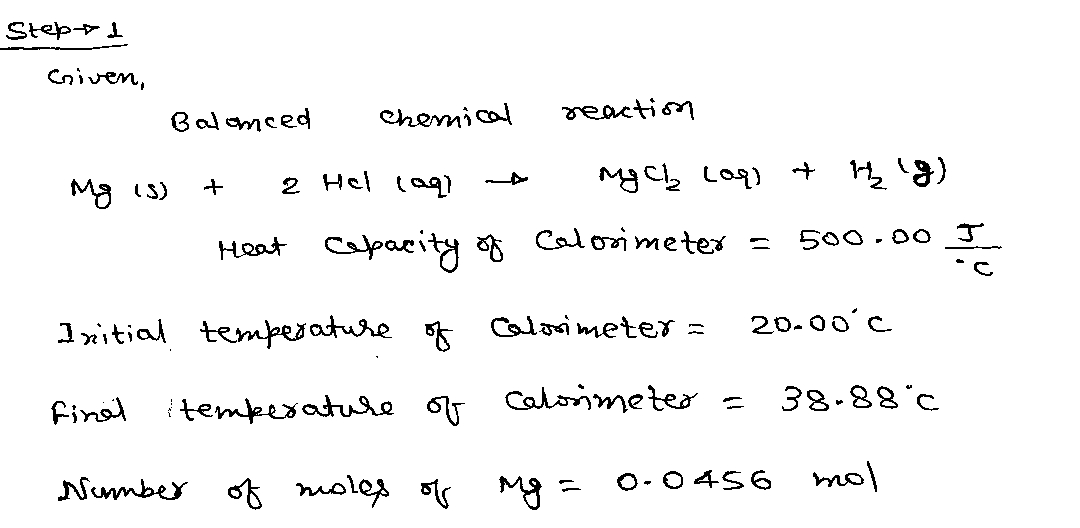Imagine that a chemist wants to quantify the heat of reaction (ΔHrxn) for the following reaction using a constant volume bomb calorimeter: Mg(s)+ 2 HCl(aq)→ MgCl2(aq)+ H2(g) The heat capacity of the calorimeter is Ccalorimeter= 500.00 J/°C andthe initial temperature of the calorimeteris 20.00°C. The chemist analyzes 0.0456molMg with slightly excess HCl using the calorimeter. Upon completion of the reaction, the thermometer temperature was 38.88°C. Quantify the value of ΔHrxnfor the reaction as it is written, per mole of Mg.
Thermochemistry
Thermochemistry can be considered as a branch of thermodynamics that deals with the connections between warmth, work, and various types of energy, formed because of different synthetic and actual cycles. Thermochemistry describes the energy changes that occur as a result of reactions or chemical changes in a substance.
Exergonic Reaction
The term exergonic is derived from the Greek word in which ‘ergon’ means work and exergonic means ‘work outside’. Exergonic reactions releases work energy. Exergonic reactions are different from exothermic reactions, the one that releases only heat energy during the course of the reaction. So, exothermic reaction is one type of exergonic reaction. Exergonic reaction releases work energy in different forms like heat, light or sound. For example, a glow stick releases light making that an exergonic reaction and not an exothermic reaction since no heat is released. Even endothermic reactions at very high temperature are exergonic.
Imagine that a chemist wants to quantify the heat of reaction (ΔHrxn) for the following reaction using a constant volume bomb calorimeter:
Mg(s)+ 2 HCl(aq)→ MgCl2(aq)+ H2(g)
The heat capacity of the calorimeter is Ccalorimeter= 500.00 J/°C andthe initial temperature of the calorimeteris 20.00°C. The chemist analyzes 0.0456molMg with slightly excess HCl using the calorimeter. Upon completion of the reaction, the thermometer temperature was 38.88°C. Quantify the value of ΔHrxnfor the reaction as it is written, per mole of Mg.

Trending now
This is a popular solution!
Step by step
Solved in 3 steps with 3 images









